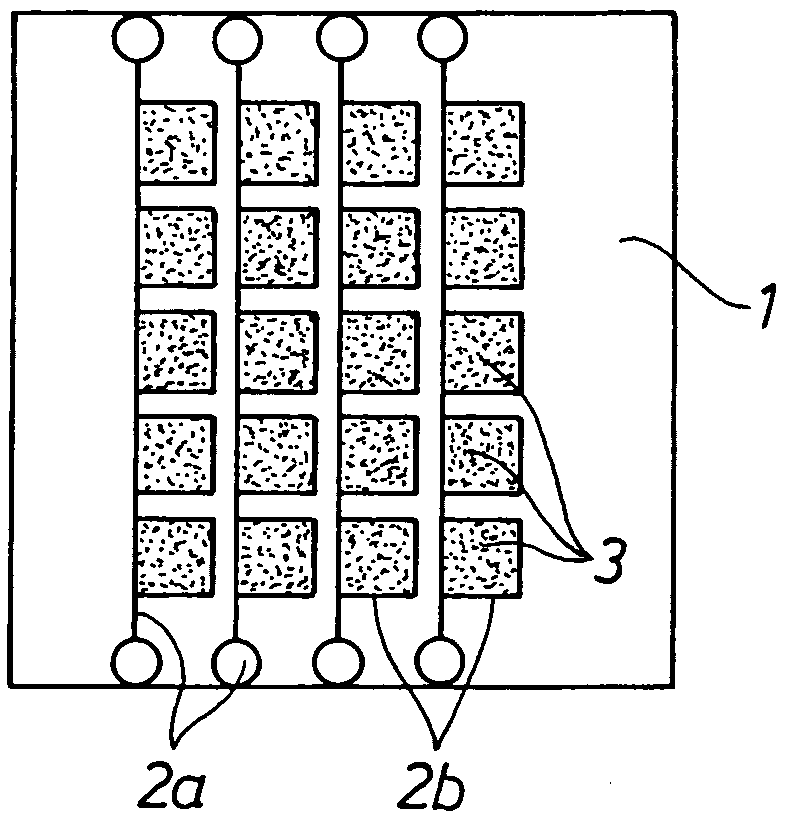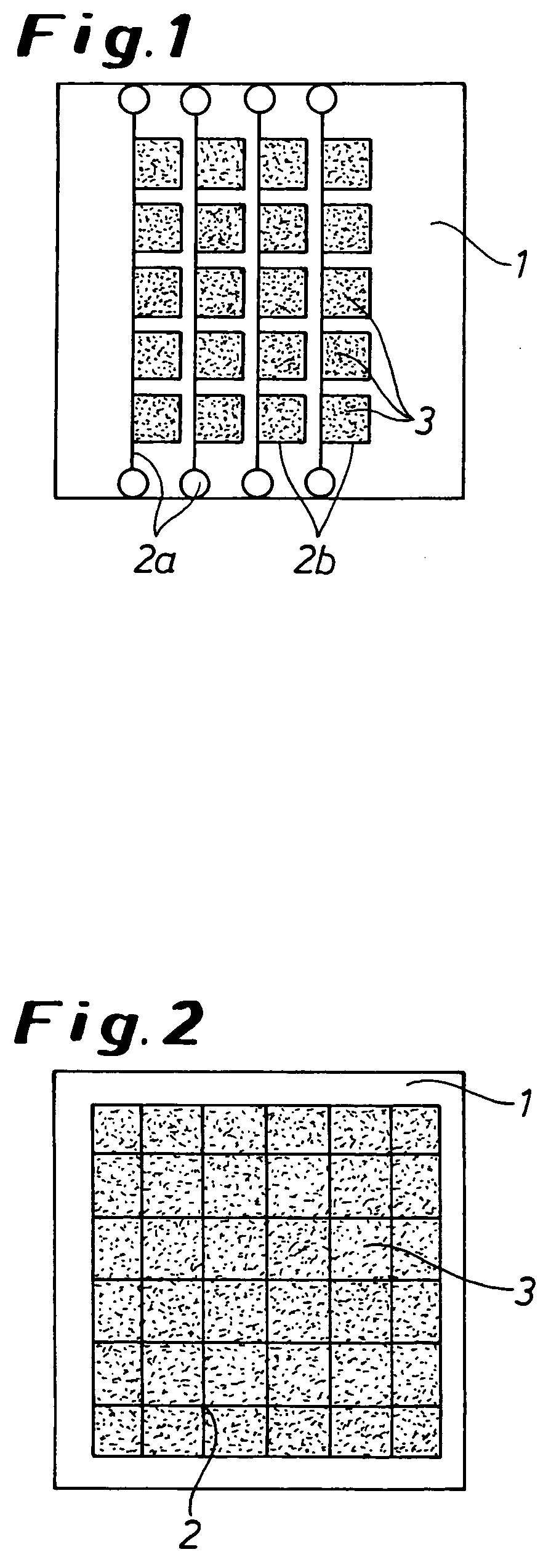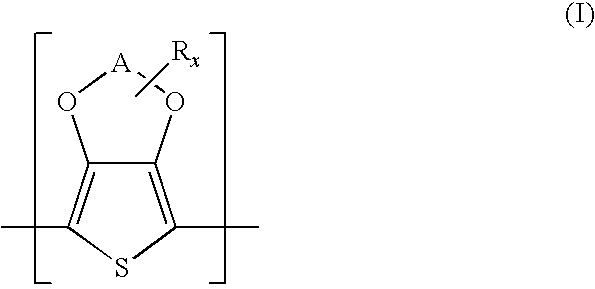Transparent polymeric electrodes for electro-optical structures, processes for producing the same, and dispersions used in such processes
a technology of transparent polymeric electrodes and electrooptical structures, which is applied in the direction of sustainable manufacturing/processing, non-metal conductors, final product manufacturing, etc., can solve the problems of not being able to use very thin lighting elements, and not being able to achieve the same
- Summary
- Abstract
- Description
- Claims
- Application Information
AI Technical Summary
Benefits of technology
Problems solved by technology
Method used
Image
Examples
example 1
Production of a PEDT:PSA Dispersion for Producing the First Electrode Layer:
[0129]a) (According to the invention) In a commercially obtainable aqueous polyethylenedioxythiophene / polystyrene sulfonic acid dispersion (PEDT:PSA dispersion) with a polyethylenedioxythiophene / polystyrene acid weight ratio of 1:2.5, a solids content of approx. 1 wt. % and a viscosity of approx. 300 mPas at a shear rate of 100 s−1 and at 20° C. (Baytron® PHC V4 from H.C. Starck GmbH), a particle size distribution with a d50 value of 25 nm, i.e. 50 wt. % of the particles smaller than 25 nm, was established by homogenisation. The dispersion was then concentrated from approx. 1 wt. % to a solids content of 1.7 wt. %, filtered (Pall, pore size: 0.2 μm) and then mixed with 5 wt. % dimethyl sulfoxide (DMSO). The viscosity of this solution was approx. 45 mPas at a shear rate of 100 s−1 and at 20° C.
[0130]b) (Comparative example) A commercially obtainable aqueous PEDT:PSA dispersion with a polyethylenedioxythiophen...
example 2
Production and Characterisation of a First Electrode Layer:
[0132]a) (According to the invention) Glass substrates were cut to a size of 50×50 mm2, cleaned and activated for 15 minutes with UV / ozone. The dispersion from example 1a) was then distributed over the glass substrate by means of a spin coater at the specified spin speed and an acceleration of 500 rpm / sec for 30 seconds. Parallel silver contacts were vapour deposited using a shadow mask and the surface resistance was determined. The film thickness was determined with a stylus profilometer (Tencor 500), the surface roughness with a scanning force microscope (Digital Instruments).
[0133]b) (Comparative example) Glass substrates were prepared as described in 2a), coated with a dispersion from example 1b) and their standard colour value, surface resistance, film thickness and surface roughness were determined.
[0134]c) (Comparative example) Glass substrates were prepared as described in 2a), coated with a dispersion from example 1...
example 3
Production of an OLED without a Second Electrode Layer
[0137]1. Substrates with Metallic Fingers:
[0138]Glass substrates were cut to a size of 50×50 mm2 and cleaned. Then metal fingers in silver were vapour deposited onto the substrate using a shadow mask. The parallel metal lines with a width of 1 mm and a distance of 5 mm apart were connected by means of a central bar running perpendicular to them and had a height of 170 nm. Immediately before coating, the substrate surfaces were cleaned and activated with UV / ozone (UVP Inc., PR-100) for 15 minutes.
[0139]2. Application of a First Electrode Layer Using a PEDT:PSA Dispersion According to the Invention:
[0140]Approx. 2 ml of the dispersion from example 1a) were poured onto the substrate and then distributed on the glass substrate with the metal fingers using a spin coater at 1000 rpm and an acceleration of 500 rpm / sec for 30 seconds. The substrate with the still wet electrode layer was then placed on a hot plate, covered with a Petri di...
PUM
| Property | Measurement | Unit |
|---|---|---|
| surface roughness Ra | aaaaa | aaaaa |
| electrical conductivity | aaaaa | aaaaa |
| surface roughness Ra | aaaaa | aaaaa |
Abstract
Description
Claims
Application Information
 Login to View More
Login to View More - R&D
- Intellectual Property
- Life Sciences
- Materials
- Tech Scout
- Unparalleled Data Quality
- Higher Quality Content
- 60% Fewer Hallucinations
Browse by: Latest US Patents, China's latest patents, Technical Efficacy Thesaurus, Application Domain, Technology Topic, Popular Technical Reports.
© 2025 PatSnap. All rights reserved.Legal|Privacy policy|Modern Slavery Act Transparency Statement|Sitemap|About US| Contact US: help@patsnap.com



